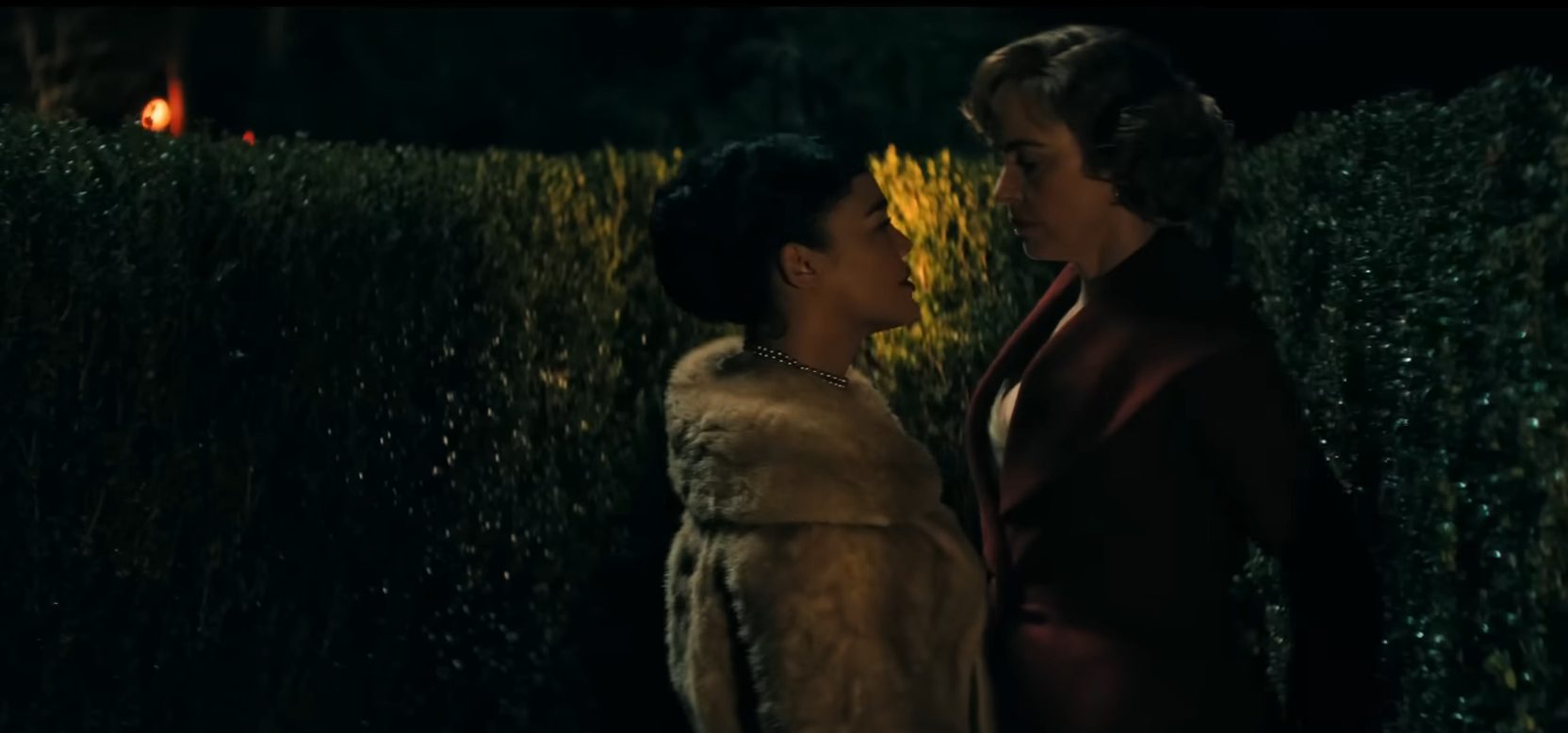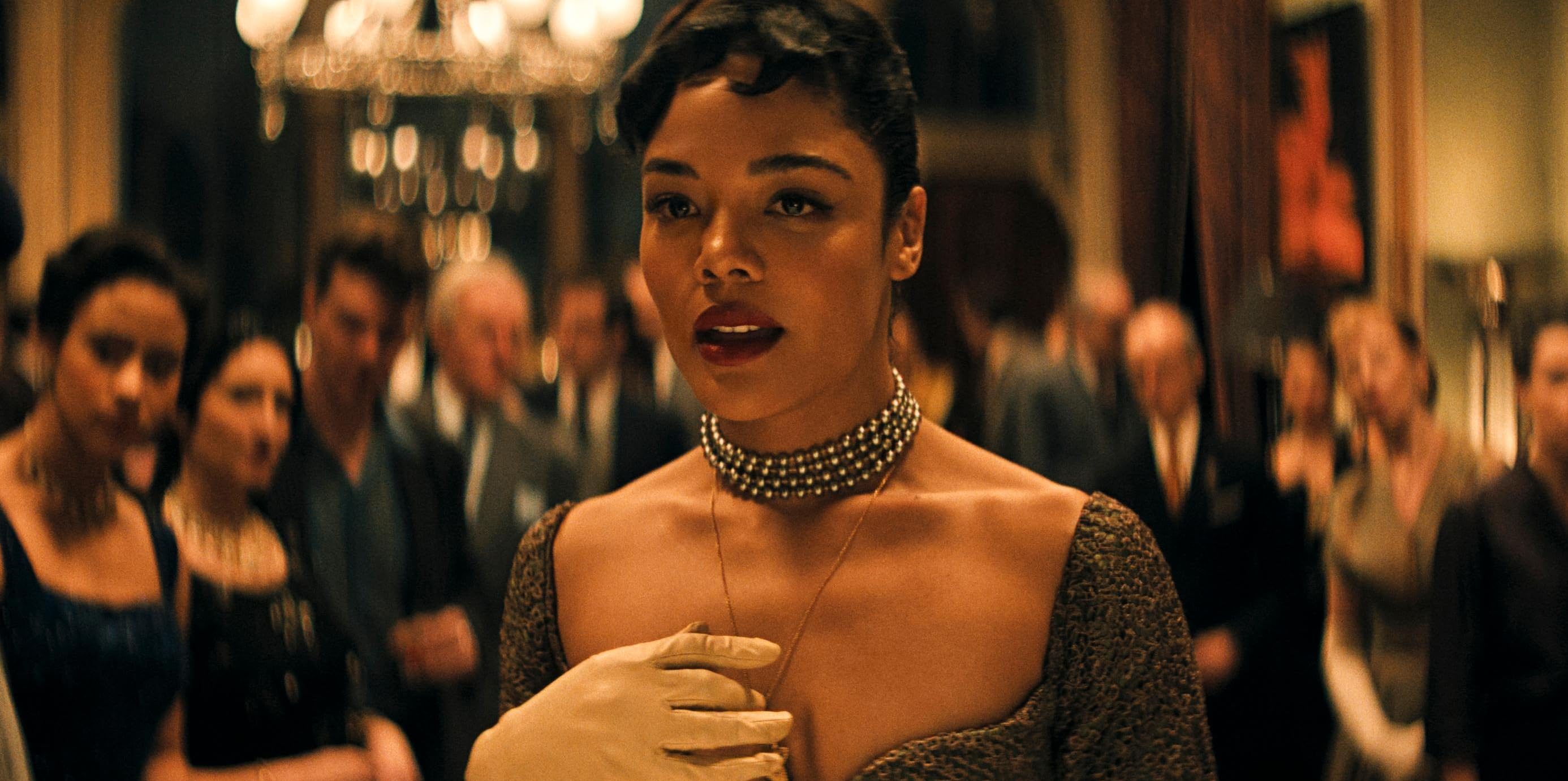Adapted from Henrik Ibsen’s 1891 play titled ‘Hedda Gabler,’ Prime Video’s ‘Hedda’ is a period drama movie helmed by Nia DaCosta, who reimagined and modernised the classic stage drama in an epic fashion. Set in the 1950s, the narrative revolves around the titular character, who feels dissatisfied with her life as a newlywed. The daughter of the late General Gabler lives in a lavish mansion with her husband, George, an ambitious scholar. With ulterior motives, Hedda somehow convinces George to throw a grand party at their house.
When a former flame named Eileen Lovborg unexpectedly shows up at the party, complications arise as the two women attempt to find out if the sparks are still there between them. Throughout the long night, Hedda’s elaborate game is put on hold while she finds herself in the middle of a past love and the hidden tensions of her present life. Starring Tessa Thompson, Imogen Poots, Tom Bateman, Nicholas Pinnock, and Nina Hoss, most of the drama unfolds within the premises of Hedda’s mansion, the interiors and exteriors of which serve as an additional character in itself as the night progresses.
Hedda Filming Locations
‘Hedda’ was filmed in its entirety in England, particularly in Nottinghamshire and Lincolnshire. Due to the SAG-AFTRA strike, the original plan of shooting the movie was delayed by several months. Ultimately, according to reports, principal photography for the Nia DaCosta directorial got underway in November 2023 and went on for a couple of months before wrapping up in January 2024.
Nottinghamshire, England
The director, Nia DaCosta, wanted something unique and extremely specific when it came to Hedda’s country manor, such as a grand staircase, a library, a ballroom, a period bathroom and kitchen, a lake nearby, and permission to drop a chandelier, paint walls, and install wallpaper. Keeping the requirements in her mind, the production designer, Cara Brower, scouted around 200 properties across the United Kingdom, out of which she also visited several in person. The search concluded when she and location manager Emma Pill stumbled upon Flintham Hall, a grade-I estate located on Inholms Road in the village of Flintham in Nottinghamshire.
Dating back to the 10th century, the property was rebuilt in 1798 and remodeled in the mid-19th century. Possessing a ballroom with a mezzanine, walled gardens, and a 10-acre lake nearby, the hall served as an ideal filming site for the movie. During an interview with Town and Country Mag, Brower revealed, “When we got there, I just knew it had the right architecture,” Brower says. “So, we wanted to come in and paint the rooms, take everything out, and even drop a chandelier. We built a period kitchen over the top of their existing kitchen and turned a guest bedroom into a period bath.” Excited about the property featuring in the film, the owners also allowed the production team to make whatever changes were necessary for shooting.
Brower worked with set decorator Stella Fox and filled the historic house with art pieces that reflected the vision of the director. For Hedda’s room, Brower deliberately chose colors and fabrics to make it feel sensual and also a bit unappealing. In an interview with Motion Pictures, Brower was asked about the color scheme of the property’s walls. She stated, “I loved the idea of doing kind of putrid colors — I don’t know any other way to describe it — because I felt this house needed to be somewhat faded. I had a beautiful reference of Lauren Bacall in her bedroom with faded purple wallpaper, sort of a dusty purple, so I thought ‘Lets bring in some Hollywood glamor.’ It should be sexy and beautiful, but also cold.”
Instead of using special effects and VFX for the chandelier crash scene, they commissioned a chandelier made from a sugar glass-like material by a talented chandelier maker. In order to prevent any sort of damage to the original flooring of the property from the shards, they also constructed a raised floor. In the same Motion Pictures interview, Brower revealed that they also modified the nearby lake a bit. She explained, “We put a platform at the bottom of the lake so Tessa could walk in and go down to exactly her height. The area around the lake was completely overgrown with brambles, so we created that little shoreline area to make it all feel seamless.”
Lincolnshire, England
To tape a portion of ‘Hedda,’ the cast and crew drove about 20-30 minutes from Flintham Hall and settled on Belton Estate, near Grantham in Lincolnshire. Situated just off the A607 on High Road in the eponymous parish, the estate spans approximately 1,300 acres of parkland and is home to a Grade I listed late 17th-century country house of the same name. Aside from its architectural elegance and timeless charm, the primary reason the team chose the expansive estate as one of the filming sites was the outdoor garden maze on the property. Nia DaCosta felt a deep inclination towards the film having a maze. She said, “I was drawn to Hedda having a maze because it’s a liminal space outside time.” However, it wasn’t their first choice.

Since Filntham Hall was devoid of one, the team initially planned to build one on the property, which they were surprisingly permitted to do. However, production designer Cara Brower had another idea. In an interview with Town and Country Mag, Cara explained, “…But what I had in my back pocket was that there was another house 20 minutes down the road that had a maze. At first, everyone was like, ‘No, no, no, we’re going to build it.’ But as things got closer, that changed to, ‘Didn’t you say there was a maze nearby?’” Therefore, the crew ultimately decided to tape the part in the film featuring a byzantine maze in the Belton House gardens. Preserved by the National Trust, the structured hedge maze proved to be an ideal backdrop to showcase the psychological quagmire and inner conflict at the heart of ‘Hedda.’
Read More: Where Was Ballad of a Small Player Filmed?


You must be logged in to post a comment.